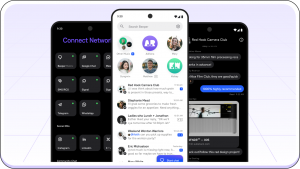iPhone 5s Fingerprint Sensor Replaces Home Button : Fast Unlock + iTunes Purchases
![]() One of the most talked about iPhone rumors for the 5s was its fingerprint-sensor technology, incorporating biometrics into the world’s most popular gadget. Apple’s certainly hoping to revolutionize the smartphone experience, looking to leapfrog rivals all the while. Fulfilling consumer expectations, the iPhone 5s launched today with a fingerprint sensor, which has replaced the square icon on the familiar Home button. The biometrics addition is one of many ways Apple’s hoping to appeal to mainstream buyers, as the company realizes that accessibility is crucial to the survival of the iPhone. Not only are the new iPhones friendlier to our wallets (the 5c costs $99 for 16GB, while the 5s costs $199 for 16GB), but appealing in terms of color and design.
One of the most talked about iPhone rumors for the 5s was its fingerprint-sensor technology, incorporating biometrics into the world’s most popular gadget. Apple’s certainly hoping to revolutionize the smartphone experience, looking to leapfrog rivals all the while. Fulfilling consumer expectations, the iPhone 5s launched today with a fingerprint sensor, which has replaced the square icon on the familiar Home button. The biometrics addition is one of many ways Apple’s hoping to appeal to mainstream buyers, as the company realizes that accessibility is crucial to the survival of the iPhone. Not only are the new iPhones friendlier to our wallets (the 5c costs $99 for 16GB, while the 5s costs $199 for 16GB), but appealing in terms of color and design.
The new fingerprint sensor on the 5s Home button is likely the most titillating of the rumored features to come to fruition today.
Fingerprint sensor replaces Home button
The new iPhone 5s is now available in silver, gold and space gray, and is missing the familiar square in the Home button. We now know the reason for the modified Home button – it’s been converted into a fingerprint sensor to identify multiple users, boosting the security for the device. The new fingerprint sensor works 360 degrees, so you don’t have to orient your fingertip accordingly. A new sapphire-cut lens now covers the revamped Home button to protect the fingerprint sensor.
The sensor can also be used to authenticate secure purchases on iTunes, and will hopefully expedite the unlocking process. Your fingerprint information is stored on the A7 chip (see more details below), making this data secure, Apple says. Storing your fingerprint data on the device addresses one of several concerns raised ahead of today’s launch event, possibly giving Apple an edge in the smartphone market.
See more details on the iPhone 5s and 5c here.
How does Touch ID technology work?
As stated, it has a sapphire crystal protecting the fingerprint sensor. Sapphire is used because it’s one of the clearest and hardest elements available on earth. Aside from protecting the sensor, it acts as lens to precisely focus the sensor on your fingerprint.
The steel ring surrounding the button tells the sensor when to start reading a user’s print. The sensor itself uses advance capacitive touch that takes high resolution image of a user’s subepidermal layer of the skin. It is then analyzed and the fingerprint is categorized into one of the three basic fingerprint categories: arch, loop and whorl, mapping individual details in the ridges that can’t be seen with the naked eye. It also has the capability to detect minor variation in ridge direction caused by pores and edge structures.
All fingerprint data is encrypted and stored in the secured enclave of the new A7 chip. It hidden away from everything else and cannot be accessed by anything except for the Touch ID. It is not stored in the iCloud or Apple servers, not even available to other software.
But does Touch ID really offer high security?
“While the fingerprint sensor may seem revolutionary, the technology has existed long before today’s iPhone 5s launch. Just like a username/password combination, this is an authentication strategy,” says Scott Matsumoto, Principal Consultant for Cigital, Inc.
“It’s the first line of defense against platform threats. The real concern remains within the applications, whose designers still have to identify other controls to be added in the program. For example, iOS7 come with a standard platform encryption, but for certain applications like online banking, a second (and often third) encryption strategy must be built in, independent of the mobile platform. From an industry perspective, application designers must start a proactive privacy approach to mobile security, rather than relying solely on platform security.”
Apple claims that fingerprint info is only available for the Touch ID, this could mean the the technology will not be available for developers to use on their apps. Though Touch ID could be used for purchasing goods other than on iTunes, unless Apple comes up with it’s own mobile payment scheme that uses Touch ID in physical stores, it’s highly unlikely that we’d see apps using the technology.
A message from John Furrier, co-founder of SiliconANGLE:
Your vote of support is important to us and it helps us keep the content FREE.
One click below supports our mission to provide free, deep, and relevant content.
Join our community on YouTube
Join the community that includes more than 15,000 #CubeAlumni experts, including Amazon.com CEO Andy Jassy, Dell Technologies founder and CEO Michael Dell, Intel CEO Pat Gelsinger, and many more luminaries and experts.
THANK YOU









